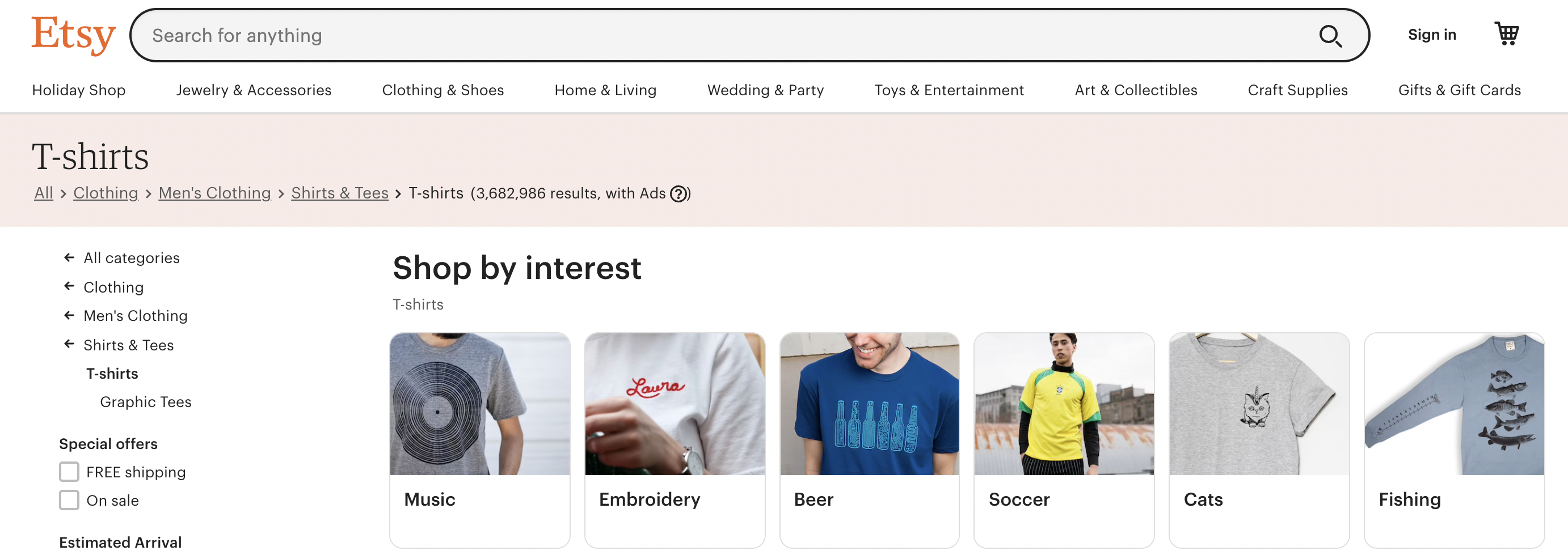

Posted by AllDayShirts on to Printing Business Tips
Over the course of a decade-and-a-half, Etsy has entrenched itself as one of the premier online marketplaces for vendors with handmade, craft, and vintage goods. As of 2019, the website featured more than 2.5 million shops catering to a userbase of over 45.7 million paying customers. Any entrepreneurs interested in selling customized t-shirts can find a potentially massive audience there. The focus on original products, rather than resales of bulk items, should make it especially appealing.

So you got your Etsy storefront up and running and your friends and family can finally buy your products. Now, how do you take it to the next level and win over people unfamiliar with you or your products? How do you convince customers to buy from you rather than the next Etsy store? It all comes down to your marketing strategies. Ideally, you should take a variety of approaches for appealing to your target audience, ranging from developing a unique brand to spreading the word.
Your business has a store, and it has a brand. The former consists of the shopping software, the sitemap, and all your product listings, elements, and features. The latter is the presentation of the store: its identity, its aesthetic, its voice, and so on. It is everything that makes your shop stand out from others, everything that keeps it from being generic. Much of your marketing depends on and helps to build a consistent brand that your target audience will find appealing. You must take just as much care in designing the brand as you do in designing your clothing products.
Choosing a memorable and natural shop name is necessary. With 2.5 million stores on the marketplace, you want to make your moniker stick out from the rest. Choosing the name that everyone will use for your store can seem like a daunting task, but it can be much easier than you would presume. If you are stumped for ideas, here is a list of simple methods you can apply to name your shop.
Branding is more than a catchy and memorable name. It also encompasses the aesthetic of your Etsy page. A few distinct visual design elements create that aesthetic, and they can be enough to attract shoppers or turn them away. T-shirt makers should know the value of a good look more than most other types of vendors. You need to give your best effort when creating and choosing the images for the following three elements:
An essential way to boost the traffic through your page and increase sales is by categorizing your products in a way that your customers will understand. If you know half of your patrons buy short sleeve t-shirts and the other half buys sleeveless tops, make main categories for both and then add subcategories for different types. Having an organized site shows shoppers that you take your Etsy store seriously. It can also increase customer confidence in your products and help visitors find what they want with ease.
Once you have the essential parts of your store and brand, head onto Facebook, Instagram, and Twitter, and make an account for your brand. Whenever you add more shirts to your shop, post a picture of your product and give your followers a small discount with a coupon code! Social media is also a great way to advertise your brand, when you have made enough revenue, purchase an ad or two from Facebook to build your customer base.